Defining UHD PQ
HDR Vivid delivers highly-accurate dynamic range mapping for display devices, by adding dynamic metadata, maximizing the original effects from HDR sources.
No Result



From 16 Hz to 24 Hz, 50/60 Hz, 120 Hz,
and high frame rate (HFR)


From silent to mono,
stereo, surround, and 3D
From silent to mono,
3D


From monochrome to dual-color
(false color), tri-color (true color),
and wide color gamut (WCG)
From monochrome
wide color gamut
(WCG)



From standard definition (SD)/
high definition (HD) to ultra-high
definition (UHD: 4K/8K) and beyond
From standard definition
(SD)/high definition (HD)
to ultra-high


Broadening the viewing angle
beyond 100° for greater immersion
beyond 100°
for greater
immersion


From standard dynamic range
(SDR) to high dynamic range (HDR)
to high dynamic
range (HDR)


3D display modes that
bridge the gap between
real and virtual worlds
3D display modes

Video is a key medium for information recording and transmission. Video technology has evolved from analog to digital SD to digital HD, and most recently to UHD (4K/8K). UHD videos carry more information and offer greater practical value. They provide users with clearer images, a broader field of view (FoV), more vivid colors, and smoother streams to generate endlessly immersive audiovisuals. In addition to radio, television, and cultural entertainment, UHD technologies have also been broadly applied in the security surveillance and medical imaging sectors, to help doctors and engineers complete operations with greater precision. HDR serves as the basis of the UHD technology system, which has spurred the development of the innovative video era.
HDR Vivid is the HDR video technology standard released by the China UHD Video Industry Alliance (CUVA). Compared with traditional technologies, HDR Vivid features greater contrasts, while also offering 3D display capabilities, enabling users to view lifelike images in more brilliant hues, with greater detail in dark regions, and more accuracy in bright regions.
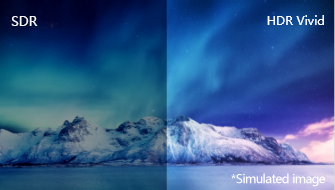
4000 nits of brightness (40x higher)
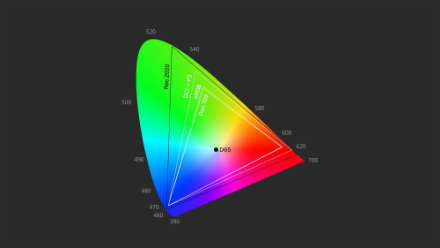
BT.2020 compliant, 1.37x DCI-P3 color space (72% higher)
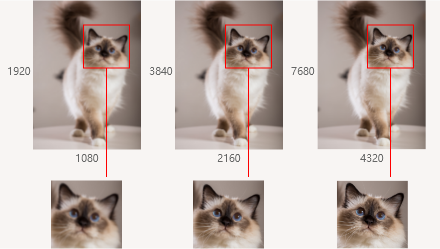
Scene-specific brightness and color mapping algorithms, for richer detail in both bright and dark regions
HDR is one of the most important features of UHD videos, expanding the display range of SDR and offering a wider color gamut. HDR provides for enriching detail in both bright and dark regions, greater contrasts and grayscale, to make HDR images more appealing at a glance.




Human sight is more powerful than any camera and display yet created, and thus, in an attempt to reproduce human vision, video technologies are continuously enhanced, from the video capture technology and equipment, video encoding, decoding, and transmission technologies, to the display devices themselves. HDR Vivid creates images that look more real and authentic than those under HDR. HDR Vivid harnesses and extended reality (XR), to transcend the limitations of time and space, rendering anytime, anywhere audiovisuals.
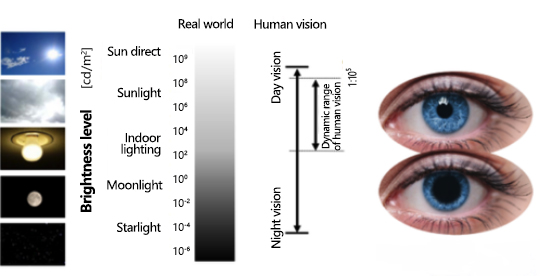

First round of consultation among alliance members and major video enterprises
Developed the
first draft.
Developed the
final draft.
Set up the HDR standard working group
and drafted the standard.
Second round of consultation among
alliance members and major video enterprises
Solicited opinions from the public.
Released High Dynamic Range Video
Technology Part 1: Metadata and Tone Mapping.
Inconsistent Standards
Different Display Effect
Though multiple HDR technical standards coexist, no implementation solution exists on the device side. The compatibility between standards is poor, and is unable to meet the requirements for the adaptation, certification, and testing of mainstream devices.
Fragmented Ecosystem
High Patent Fees for Certain Standards
High costs across the value chain, and limited device support has hindered the development of the ecosystem.
Difficult to Produce
Lack of UHD Media Sources
Insufficient supply of high-quality media sources, few UHD channels, unsatisfactory video length, and inadequate 8K sources have suppressed user demand for UHD video.
HDR Vivid delivers highly-accurate dynamic range mapping for display devices, by adding dynamic metadata, maximizing the original effects from HDR sources.
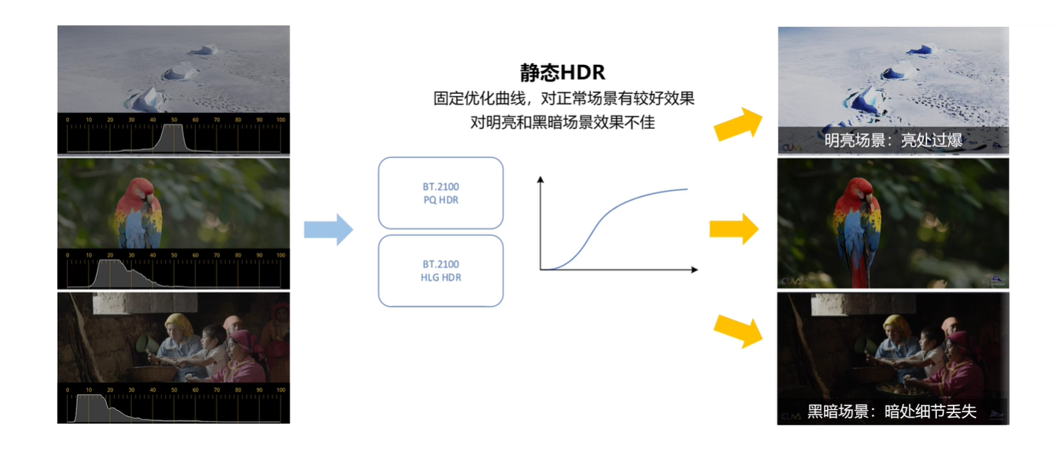

HDR Vivid publicly defines the HDR process of UHD video presentation and processing in the form of group standards, ensuring that high-quality video is faithfully reproduced. Based on the existing HDR, dynamic metadata is added to provide more accurate dynamic range mapping for the display device, so as to restore the original artistic effects of the HDR content to the greatest possible extent. In addition, HDR Vivid embeds dynamic metadata from front-end production, ensuring that the device computing power can be realized, and that processing effects are controllable and predictable. Compared with the existing private HDR technology within the industry, HDR Vivid represents a more open and universal technical standard and solution. HDR Vivid is more suitable for all parties, spurring industry-wide deployment via open technology and enhanced security.
HDR Vivid offers an E2E media system standard to ensure backward compatibility.
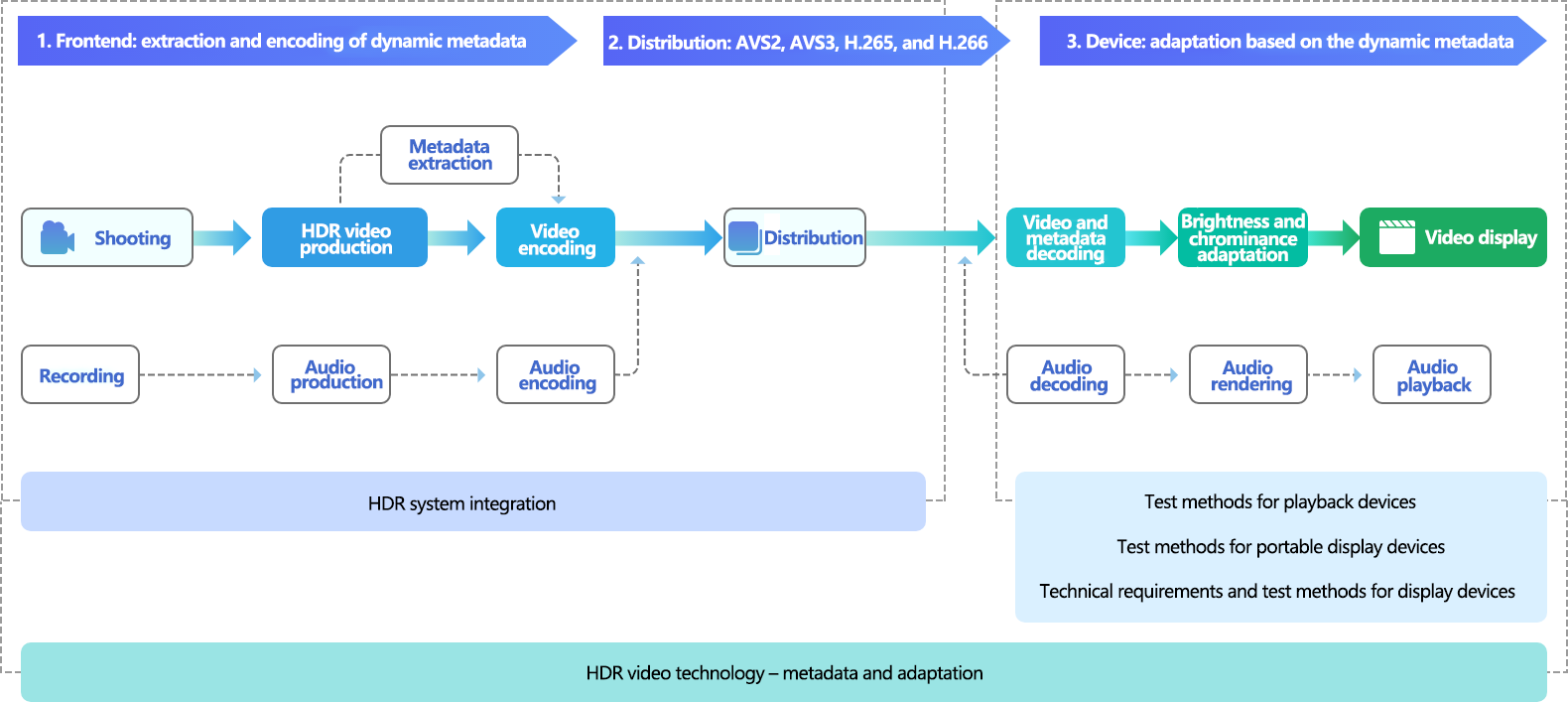
Existing UHD HDR videos can be smoothly upgraded to HDR Vivid videos, lowering the technical implementation threshold. Dynamic metadata from HDR sources is extracted and encoded in the front-end production phase, and no modifications are required during transmission. Adaptation is performed based on dynamic metadata on the device side.
The comprehensive HDR Vivid device-side implementation solution has helped facilitate the evolution to high-standard images.
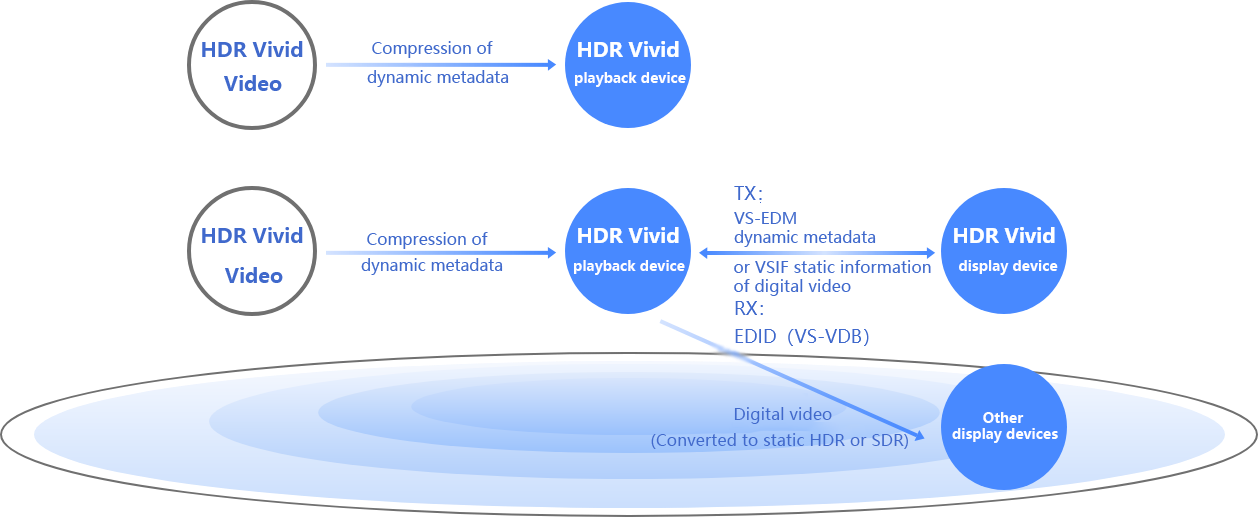
Standard compliance test and certification are conducted on devices, such as TV, set-top boxes (STBs), and codecs that directly affect the display quality, according to strict certification specifications.
· Decoding
· Adaptation
· Display
· Playback device: decoding and forwarding
· Display device: EDID, adaptation, and display
· Playback device: decoding and adaptation
· Display device: EDID, dynamic range of the
screen brightness, and display
· Playback device: decoding and format/
brightness adaptation
· Display device: display

① Data: minimum_maxrgb, average_maxrgb, variance_maxrgb, maximum_maxrgb
② Curve parameters: including HDR→HDR and HDR→SDR (100 nits)
| Basic Curve Parameter | Reference Brightness | Cubic Spline Curve Parameter | ||||||||||||
|---|---|---|---|---|---|---|---|---|---|---|---|---|---|---|
| mp | mm | ma | mb | mn | k1 | k2 | k3 | Reference display |
moda | mb | TH | Delta1 | Delta2 | strength |
UHD videos can be produced in batches, using the automated and manual UHD video production and broadcasting tools.
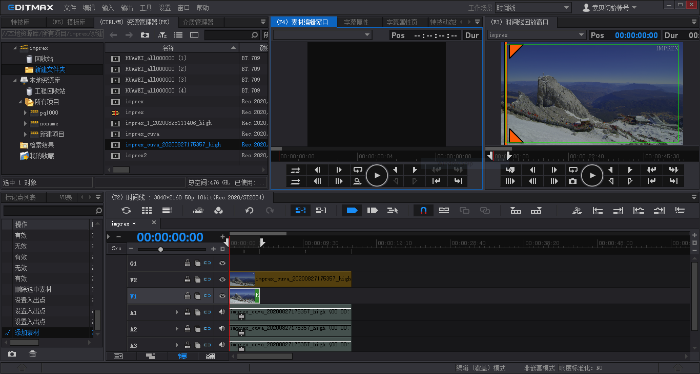
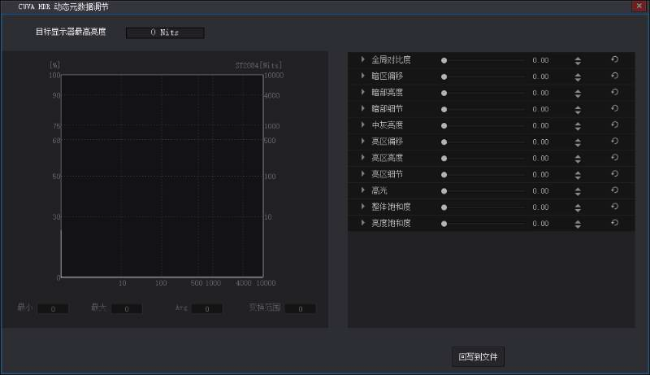
Only dynamic metadata generation is added to the production phase, without changing the original HDR10 and HLG HDR production processes. The easy-to-use graphical user interface (GUI) is used to help producers manually debug the dynamic metadata. An automatic dynamic metadata generation tool is provided to support batch production, and reduce development costs.
During the formulation and implementation of the HDR Vivid standard, HiSilicon has worked with industry partners to develop technical standards and device adaptation solutions, and taken the lead in launching multiple chipsets that support HDR Vivid.
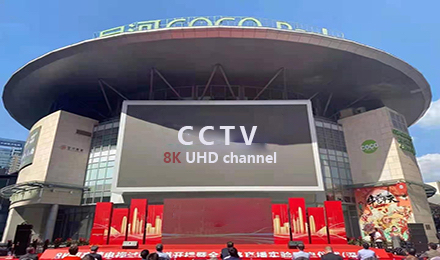
HiSilicon Partners with CCTV to Pilot 8K UHD Live Broadcasting

HiSilicon Leads UHD Video Industry into Promising Era, with All-New HDR Standards
Meet 8K, a New Way to Perceive Our World
With sharper edges, more vibrant colors, and broader field of view, HiSilicon 8K puts smart home interactions front and center.
Display Innovation that Knows No Bounds
HiSilicon's Hi-Imprex Engine brings next-level picture quality to expansive displays.
AVS3: Tailor-Made for 8K Applications
AVS3 is the first-ever standard built specifically for the 8K UHD sector, media applications, and virtual reality (VR) industry.
Follow US
Contact Us
Room 101, 2 Hongqiaogang Road, Qingpu District, Shanghai
+86 755 28780808
support@hisilicon.com
New R&D Center, 49 Wuhe Road, Bantian, Longgang District, Shenzhen
+86 755 28780808
support@hisilicon.com
This site uses cookies. By continuing to browse the site you are agreeing to our use of cookies. Read our privacy policy